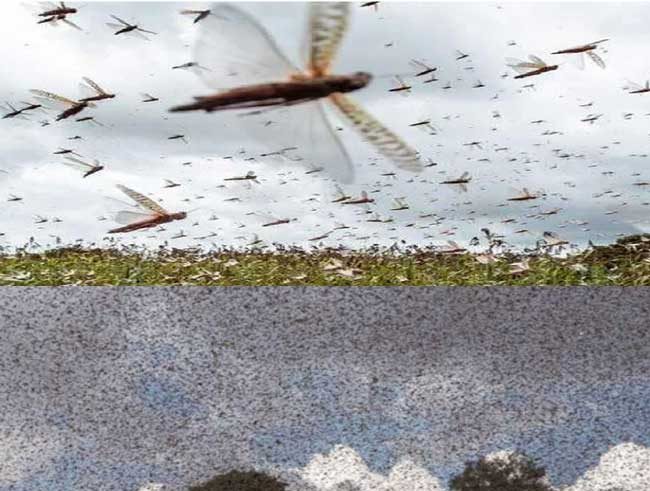Special Desk
The Directorate General of Civil Aviation (DGCA) has warned aviation industry of the risks posed by locust swarms during a flight and even when the aircraft is on ground. As per DGCA, such locust attacks can damage parked aircraft, obstruct visual contact, cause problems in landing and take-off.
The regulator has asked pilots to make entry in the pilots defect log in case they fly through a locust swarm, and give details of any malfunction experienced.

“As locust swarms fly along with the current wind, their path of travel changes with the wind direction. Predetermination of their travel is difficult as weather satellites and other satellites used to monitor environment can not detect Locust swarms”, says the circular to the aviation industry by the aviation watchdog.
“All pilots are required to share information of locust swarm location if they have sighted any during the flight. As far as possible, it is strongly advised that flights should be avoided through any known locust swarm. The only favourable aspect is that locust do not fly at night, thus providing better opportunity to sight and avoid them,” DGCA said.
While damage to agriculture and crops is known, the DGCA has warned aviation stakeholders of the risks posed by such attacks during a flight and even when the aircraft is on ground.
Though individual locust can be small in size, large numbers on windshield can impact the pilot forward vision and use of wipers at times may cause the smear to spread even more.
As per DGCA, such locust attacks can damage parked aircraft, obstruct visual contact, cause problems in landing and take-off, and can cause erroneous indications such as unreliable air speed.
also read :Trump snaps ties with WHO
also read : The Locust attack: food security threat in India
“Almost all air intake ports of the aircraft will be prone to ingestion in large numbers, if the aircraft flies through a swarm. Pilot and static sources can also get partially or fully blocked while flying through locust swarms. Blocked pilot and static sources lead to erroneous instrument indications, especially unreliable air speed and altimeter indications,” the DGCA has warned.
 Jubilee Post News & Views
Jubilee Post News & Views





